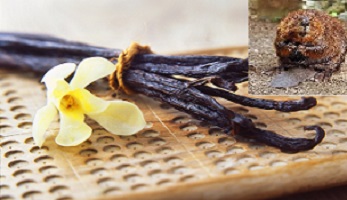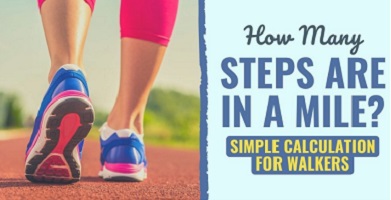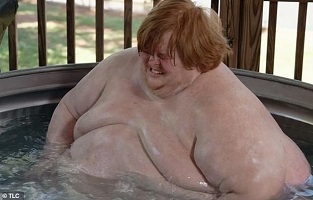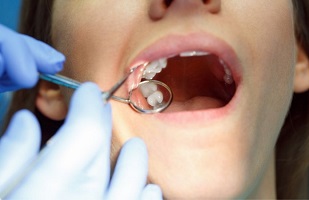Where Does Vanilla Extract Come From?
Where Does Vanilla Extract Come From?
Vanilla Beans

- The Bittersweet Story of Vanilla
- Go and Google: “Where does vanilla flavoring come from”
And thank me later. - The stomach-churning origins of vanilla flavorings and extract have been revealed on social media
- What is the origin of vanilla flavoring? The truth about the TikTok viral claim about beavers and castoreum
- Is it true that the vanilla flavoring in your food and drinks is derived from beaver butts?
If you start typing ‘Where does vanilla extract come from?’ into Google, your query will most likely be autocompleted.
This term has seen an increase in search engine trends, and there is a reason for this.
Sloowmoee, a TikTok user, started it all by posting a video in which he instructs people to film their reactions before and after googling “where does vanilla flavoring come from?”
Sloowmoee takes a big sip of vanilla latte in the video before googling the question, looking shocked and shouting “no more vanilla!”
It spawned hundreds more clips of people doing the same thing, and Google searches for the question skyrocketed.
When you google the question, one of the top results is a 2013 National Geographic article titled “Beaver butts emit goo used for vanilla flavoring.”
It’s no surprise that this trend went TikTok viral.
Where Does Vanilla Extract Come From? An Overview
But have you ever wondered where vanilla extract comes from? Or, wait for a second, what exactly is vanilla?
We’ve got answers for you (for example, vanilla beans aren’t beans at all) down below. Let’s get started:
To begin,
What is vanilla?
With up to 2,300 tons produced each year, anilla is one of the world’s most popular spices.
The soft, sweet fragrance and flavor of vanilla, extracted from the seed pod of the vanilla orchid, has made it a popular ingredient in everything from confectionery, ice cream, baked goods, and soft drinks to perfumes and toiletries.
Vanilla cultivation and harvesting can be a time-consuming and complicated process.
Each individual flower must be hand pollinated, and because Madagascar now grows over 80% of all vanilla, unfavorable conditions in one location can lead to a global shortage.
Many of the products you think contain vanilla have been flavored with vanilla-like substances known as ‘vanilla extracts’ to save time and money.
Where does vanilla flavor originate?
Over the years, people have looked for vanilla substitutes in the most unusual places, possibly the most unusual of all being the back end of a beaver.
Beavers appear to mark their territory with a sweet-smelling substance called castoreum, which is produced by the animal’s anal glands.
This syrupy, yellow-brown liquid is said to taste and smell similar to vanilla and was used as both a food additive and a fragrance from 1900 onwards, sounds delectable
Where Does Vanilla Extract Come From?
This fact recently elicited a collective gasp of horror as TikTok videos of people Googling where vanilla extract comes from recoil in disgust as they discover castoreum.
However, if you prefer your ice cream sundaes to be free of aquatic mammals’ anal secretions, the good news is that castoreum is now rarely used as a food additive, though it is occasionally used in perfumes and cosmetics.
The extraction requires anesthetizing the animals in order to milk their anal glands, which makes hand-pollinating vanilla orchids appear to be a pretty good deal, and as new methods of producing synthetic vanilla became available, the practice all but died out.
The beavers and their butts are mostly left alone these days, leaving the rest of us to wonder who thought to look there in the first place.
Vanilla Flavor Frequently Asked Questions
Where does vanilla extract come from?
Vanilla flavoring, specifically “pure vanilla extract,” is created by soaking vanilla beans in an alcohol solution to “extract” (get it?) all of their flavor compounds.
The vanilla extract must contain at least 35% alcohol and 100 grams of vanilla beans per liter, according to the FDA.
When looking for high-quality extract, look at the ingredients: It should only include vanilla beans, alcohol, and water, with no other ingredients such as sugar or artificial colors or flavors.
Where does vanilla flavoring in food and beverages come from?
The answer is far less exciting – but far more pleasant – for both humans and beavers.
The vast majority of vanilla flavoring in foods and beverages today is synthetic.
Vanillin, the organic compound found in vanilla beans that give vanilla extract its flavor, is now used more frequently than natural extract.
Artificial vanillin is made from either guaiacol which is an aromatic oil derived from guaiacum or wood creosote, or lignin, which is found in the bark.
I have a vanilla bean. Now, what do I do?
To access the bean seeds, cut a slit down the length of the pod with a paring knife, leaving the bottom intact.
To reveal the grainy interiors, open the sides like shutters. Gently press the flat side of the knife down the pod, collecting the seeds as you go.
Then you’re ready to incorporate it into whatever sweet treat you’re preparing.
Wrap unused vanilla beans tightly in plastic wrap or reusable Bee’s wrap, then place in an airtight container and refrigerate for up to 3 months.
What other varieties of vanilla are there? What other forms does vanilla come in?
While extract and whole beans are two of the most common sources of vanilla flavor, they are not the only options.
Vanilla can also be purchased in the form of vanilla bean paste.
It is a blend of vanilla bean seeds, extract, sugar, and natural gum thickeners that produces classic speckles at a fraction of the cost of whole beans.
Where does vanilla flavoring come from TikTok?
The vanilla bean plant, which is often sourced from Madagascar, Mexico, or Tahiti, provides the majority of vanilla flavoring.
However, shock waves were sent across TikTok after users discovered that some flavoring is derived from beaver anal excretions.
Record yourself before and after googling where vanilla extract comes from ~ Where does vanilla flavoring come from TikTok?
TikTok users are still stunned after a viral video revealed the origins of vanilla flavoring. The extract is derived from an unexpected body part of a Beaver.
When was vanilla extract invented?
1847
Vanilla plantations were established in Indonesia and other tropical countries such as Madagascar in the mid-1800s.
Vanilla extract wiki
The vanilla extract is a solution created by macerating and percolating vanilla pods in an ethanol and water solution. It is regarded as a necessary component
Vanilla is a spice derived from the genus Vanilla orchids, primarily from the pods of the Mexican species, flat-leaved vanilla (V. planifolia).
Does Starbucks make use of castoreum?
Fortunately, there is no proof that Starbucks employs castoreum.
According to the print screen I captured above, neither regular nor sugar-free vanilla syrups contain castoreum or castoreum derivatives.
Where does vanilla flavoring come from Reddit? Where does the flavoring for vanilla extract come from?
Vanilla beans
Vanilla extract, specifically “pure vanilla extract,” is created by soaking vanilla beans in an alcohol solution to “extract” (get it?) all of their flavor compounds.
The vanilla extract must contain at least 35% alcohol and 100 grams of vanilla beans per liter, according to the FDA.
What is the origin of the vanilla bean? Where does vanilla bean come from?
The majority of vanilla beans on the market today come from Madagascar, Mexico, and Tahiti.
As with wine, chocolate, and coffee, each country’s vanilla has a distinct flavor profile and characteristics due to differences in climate, soil, curing methods, and vanilla species.
How is castoreum harvested?
How is castoreum extracted? The majority of castoreum is now harvested in a sterile environment by anesthetizing beavers and expressing castor sacs near their tails.
Beavers were nearly extinct because they were killed for their castoreum and pelts in the past.
Types of Vanilla Products
- Vanilla Bean
- Vanilla Bean Paste
- Pure Vanilla Extract
- Imitation Vanilla
- Vanilla Powder
- Vanilla Syrup
Vanilla Imitation vs. Vanilla Extract
Natural vanillin is found in pure vanilla extract, whereas synthetic vanillin is found in imitation vanilla. The natural vanilla flavor contains hundreds of flavor compounds in addition to vanillin, but imitation vanilla flavoring only contains vanillin.
Is Vanilla a Fruit?
Vanilla beans are, in fact, the edible fruit of a flowering orchid. The vanilla orchid’s cured bean pods provide true vanilla flavor.
How Long Does Vanilla Last?
If stored in a cool, dark place, pure vanilla extract with no additives will last indefinitely.
Over time, it will develop more complex flavors. After 4 years, imitation vanilla may begin to lose its potency.


